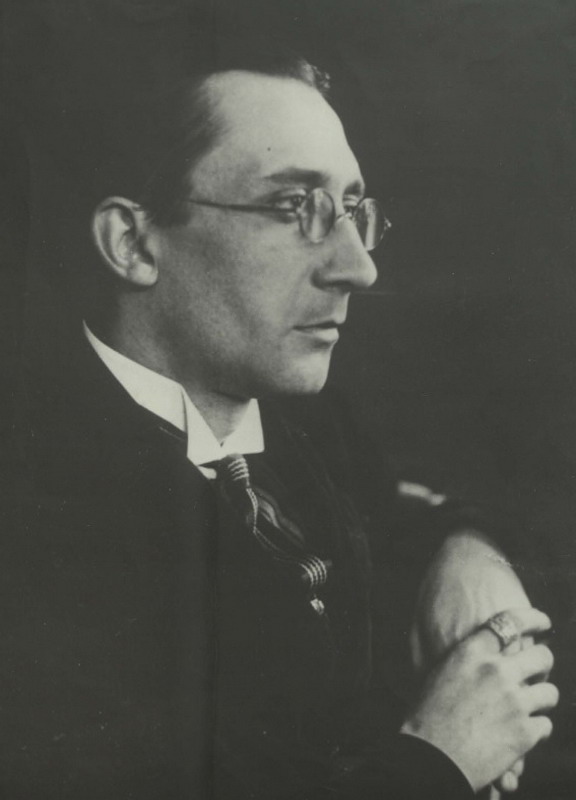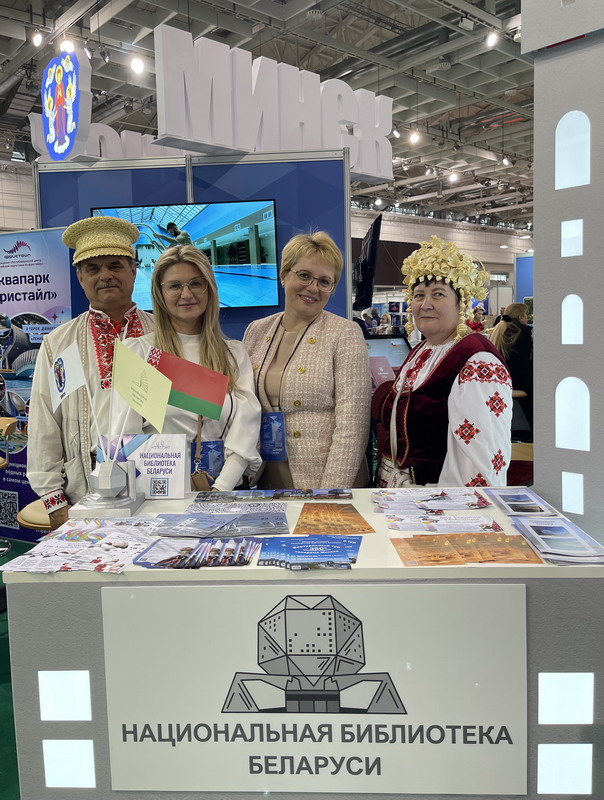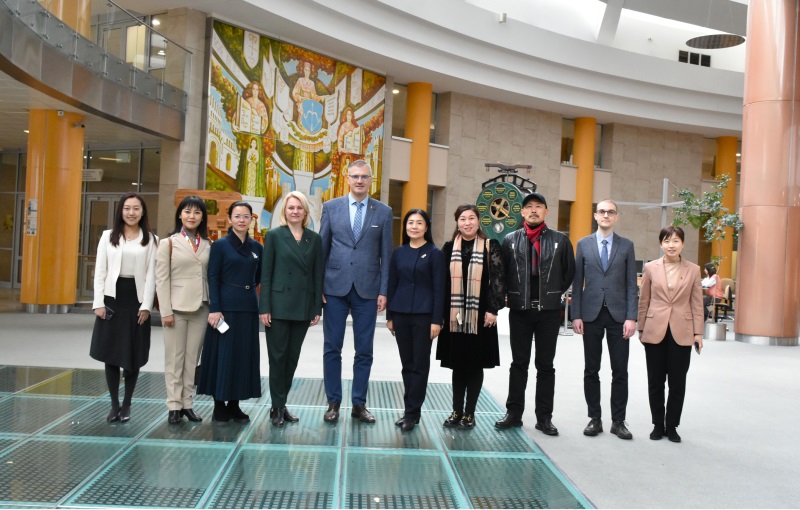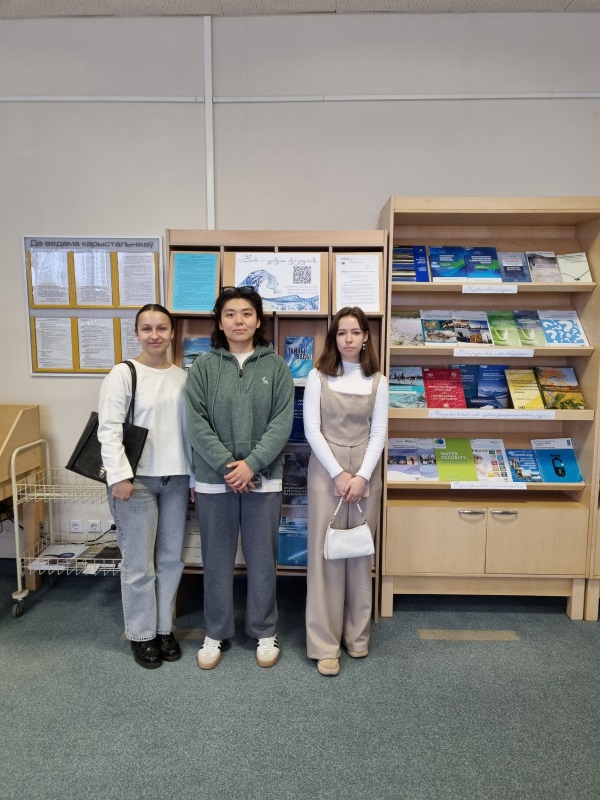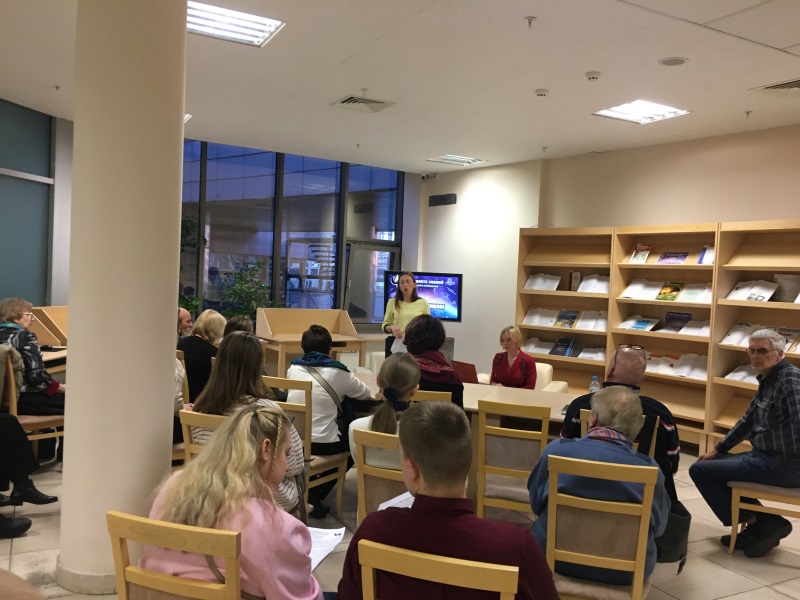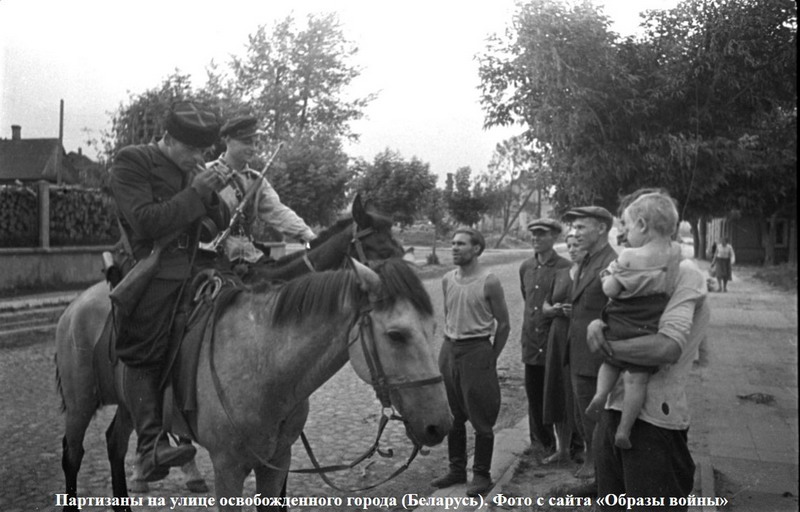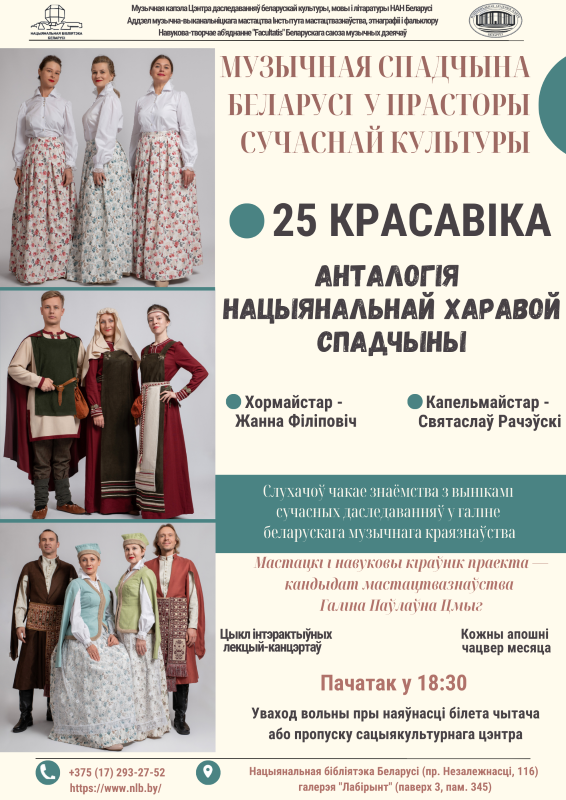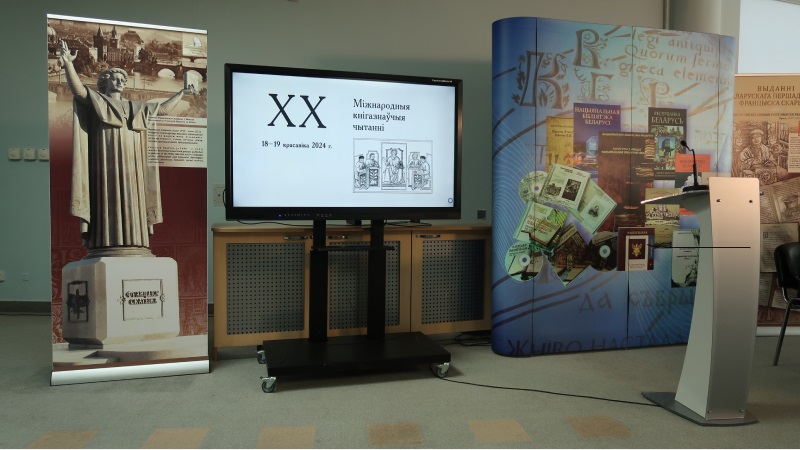October 13 marks the 125th anniversary of the birth of Mikalaj Shchakacikhin (1896–1940), a talented historian, theorist and art critic, cultural critic, teacher, creator of the scientific base for national art history.
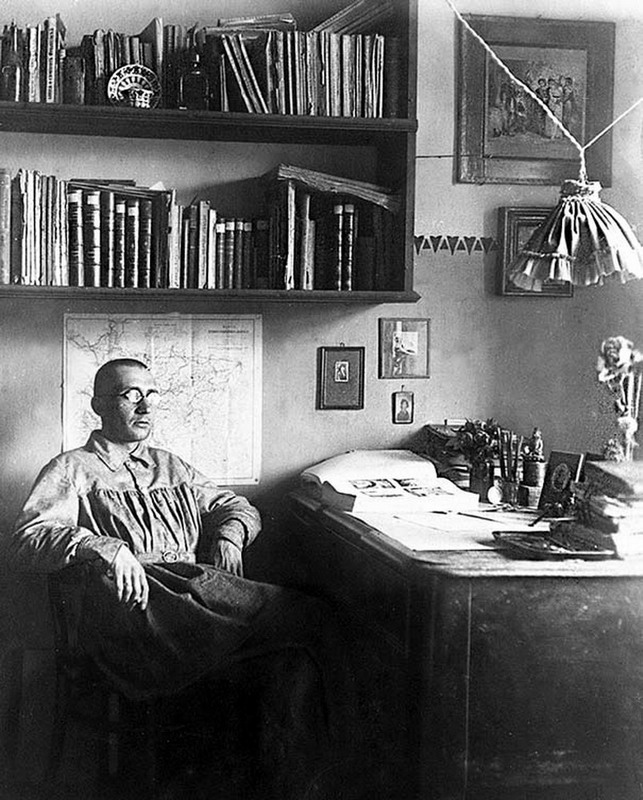
Mr Shchakacikhin was born in an intelligent family that had close ties with the art elite of that time – musicians, composers, writers. This contributed to the boy's interest in and respect for culture and art. He knew several European languages, wrote poetry. In 1914, after graduating with a gold medal from the A.E. Flerov Moscow private school, Mikalaj Shchakacikhin entered the History and Philology Department of the Imperial Moscow University and studied at the Department of Art Theory and History, where his teachers included a number of famous scholars. In 1918, the young researcher's first independent thesis on the Swiss graphic designer and painter F. Vallotton was published as a separate edition.
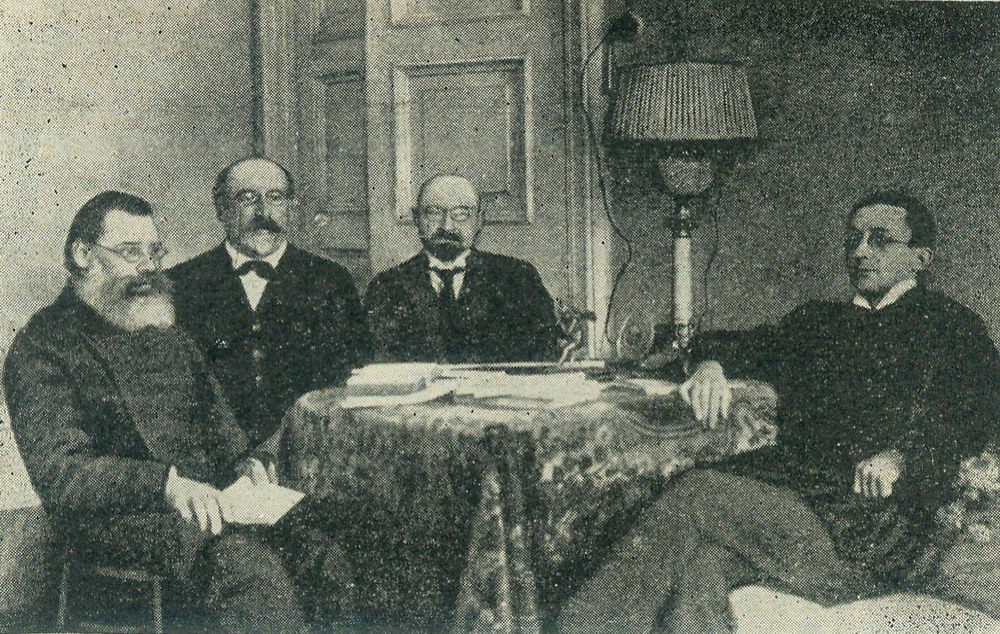
After graduating from the university, Mikalaj Shchakacikhin worked for a short time in museums in Moscow, Orel, Kharkiv. When young Belarus needed academic staff, he moved to Minsk in 1921, became assistant professor at the Department of the History of Art, and later assistant professor at the Belarusian State University of Culture and Art. He quickly mastered the Belarusian language and after a while read lectures in it. Mikalaj Shchakacikhin began a systematic study of the Belarusian art culture. He developed a scientific concept of the history of Belarusian art, its periodization, the main directions of development, prepared a fundamental course of lectures. In 1925 he headed the Fine Arts Committee at the Institute of Belarusian Culture, in 1926 he became associate member of the History of Art Committee and style editor of the publishing department, in 1927 – academic secretary of the Belarusian Art Study Committee. During 1929–1930, he was chairperson of the History of Art Committee of the Belarusian Academy of Sciences.
The scholar conducted research into the theory and practice of various branches of Belarusian art, made expeditions, studied archival materials, and appeared in the press. His scholarly interests varied greatly, including Old Belarusian icon painting, church frescoes, engraving, ancient sacral and defensive architecture, numismatics, sphragistics, Sluck belts, and the art of I. Akhremchyk, M. Filippovich, V. Volkau, A. Hrube, etc. He introduced the concepts of "Belarusian Revival", "Belarusian Gothic", "Belarusian Baroque". He is one of the founders of museum collections in Belarus.
His famous writings include "The Frescoes of the Polack Boris and Gleb Monastery"; "Vasil Vashchanka, Mahiliou Engraver of the End of the 16th – Beginning of the 18th Century"; "Materials for the History of the 18th Century Belarusian Painting"; "Our Contemporary Art and National Style" (all 1925); "Modern Art of Belarus" (1926); "Belarusian Architecture in the 11th-12th Centuries"; "Belarusian Art in Historical and Archaeological Literature" (1927); "Monuments of Ancient Architecture of the 17th–18th Centuries in Minsk" (1928); "The New Minsk" (1930). The scholar also created a number of fundamental works dedicated to Francysk Skaryna and his publications. He decided to compile the results of his research into a fundamental multi-volume edition of the "Essays on the History of Belarusian Art", but only the first volume (1928), a scientific review of the Belarusian art from antiquity to the sixteenth-century defense churches, was published.
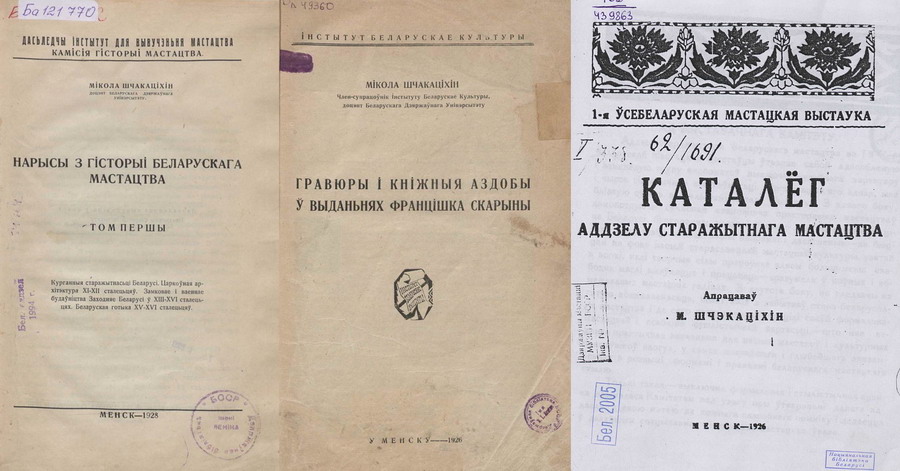
In 1930, Mikalaj Shchakacikhin was groundlessly accused, arrested and deported to Belebey of the Bashkir ASSR. He held various positions and continued his research: he wrote several articles (unpublished) and sent the manuscript of "An Essay on the History of Lithuanian Coins of the 16th-17th Centuries" (Part 1, 1932-1937) to the Hermitage. Seriously ill with tuberculosis, Mikalaj Shchakacikhin died in exile on April 5, 1940; he was posthumously rehabilitated on January 30, 1956. A memorial plaque has been placed on the house at 24 Valadarskaha Street in Minsk, where the famous art historian lived.
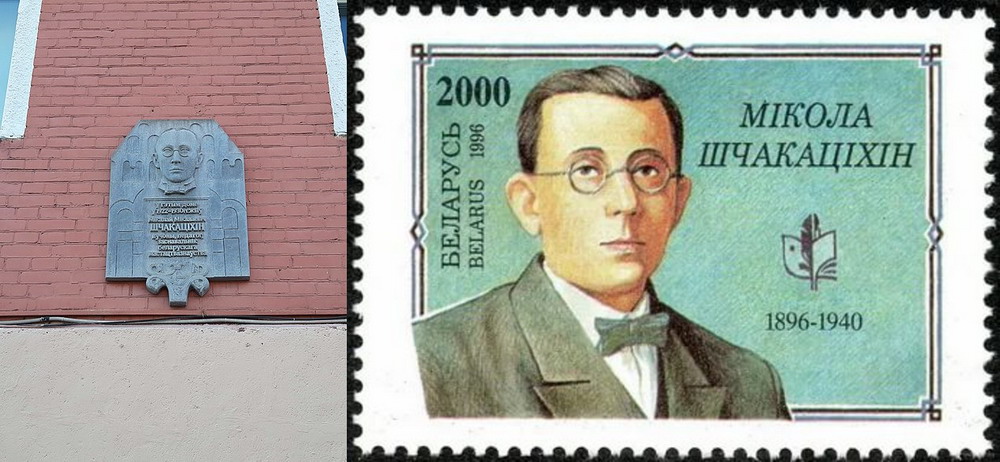
The scientific work of Mr Shchakacikhin, a researcher of the Belarusian art heritage, became the basis for the further development of the national art history. Based on the work of the scientist, the next generations of researchers continued an in-depth study of the problems he raised. This contributed to the clarification of many questions and improved the objective picture of the development of Belarusian art created by Mikalaj Shchakacikhin.
Information about the life and work of Mikalaj Shchakacikhin, his writings can be found in the electronic catalogue of the National Library of Belarus, the online encyclopaedia "Belarus in Persons and Events".
Bibliology Research Department

